Articles
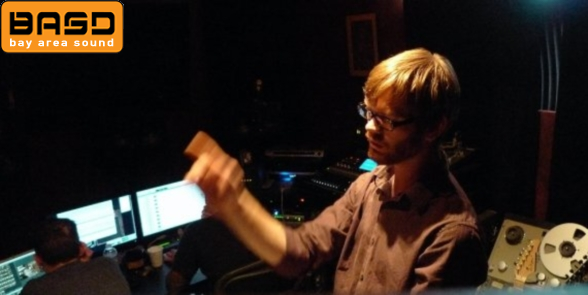
Bay Area Sound Interview The LucasArts Days
If you've played the games Mojo is built around, you're certainly familiar with the work of Bay Area Sound or the folks behind it. Formed in 2000 by Julian Kwasneski and Clint Bajakian after years working in-house in the LucasArts audio department, the highly respected and seasoned company offers everything from sound design, musical scoring, and voiceover work for game projects.
In addition to being the go-to guys for LEC and Telltale, BA Sound has handled audio duties for Psychonauts, Insecticide, and A Vampyre Story as well. Today, it is primarily run by Kwasneski and Sam & Max maestro Jared Emerson-Johnson:
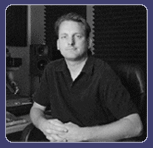
Roles: Sound Director/Designer/Editor/Technician/Engineer/Plate Spinner
Work of his you know: Uh, like every game in our database from 1994 on.
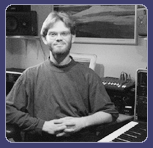
Roles: Sound designer, composer, performer, voice director, voice actor
Work of his you know: Psychonauts, A Vampyre Story, every single Telltale game starting with Bone
One of the most consistently cited areas of excellence among the LucasArts classics and the work of the spinoff studios is the sound, and considering the dudes responsible continue to play such a crucial and dependable role in titles we anticipate even now, it’s really way past time for these unsung heroes to get some direct Mojo lovin'.
Fortunately, we were able to briefly coax some of BA Sound's key people away from their hectic schedules, and the result is this enlightening and long overdue interview for your enjoyment. Join us as our prodding questions are answered and we learn what goes on behind-the-scenes to create the audioscapes for our favorite games, and why when it comes to BA Sound the end result is far from background noise.
Julian, you served a lengthy stint at LucasArts before flying the nest to form Bay Area Sound. What was it like working at Skywalker Ranch? What were some of the games that you were credited on?
Well, to just clarify, I never worked at Skywalker Ranch, I was at Lucasarts. When I started there it was still a small company and I got to ride the wave as it transformed into a big company. While employed there I worked on nearly every title Lucasarts (and Lucas Learning) released from the end of 1994 to 2000. Some of the bigger names that come to mind are Rebel Assault, Full Throttle, The Dig, Outlaws, Escape From Monkey Island, Grim Fandango, Jedi Knight, X-Wing Alliance and Star Wars Episode 1. It was a great place to work, filled with a lot of talented people, many that I am still in contact with today, both professionally and personally.
What was your official title at LucasArts? Could your briefly described what your “day-to-day” work entailed?
I had two--or three really. I was in Product Support for about 6 months (which is how I got my foot in the door). I quickly transitioned into what was then called the Voice Department as a Voice Editor. I spent a lot of time working on tasks that were in the grey area between voice and sound (like creative processing of characters) and eventually made the move into the Sound Department where I ultimately became a Lead Sound Designer. In those days we wore many hats so I could just as easily have been called Audio Engineer, Assistant Programmer, Mac Tech Support Specialist, Recording Engineer---and Department Psychiatrist.
A typical day involved doing everything I could to get sound into the game. Larry The O had the greatest quote… that his job was to try to deal with the things that got in the way of him doing his job. That was my job. This was no nine-to-fiver and I slept on the couch in my studio more times than I can remember (a couch that Clint and I stole from the President's office (sorry Jack, it was us).
To what degree is sound design a technical field? To what degree was actual implementation part of your work?
It has always been a technical field, regardless of whether it was viewed that way. In the old days, we worked very closely with programmers and level designers. Nowadays we work with programs like WWise and FMOD, or with people who specialize in using these and other tools. I have always said that you can take the greatest sound in the world, implement it poorly and it will fail. Take a bad sound that is implemented well and it can be a total success. Though I prefer good sounds that are implemented well, the bottom line is that a sound designer with implementation skills is far more effective (and valuable) than someone without those skills.
By presumably having access to Lucasfilm resources, I imagine that you had a lot of stock sound effects to play with once digital sounds took over from the bleeps and MIDIs of the olden days. How often was it necessary to generate your own sounds, and how did you go about doing it?
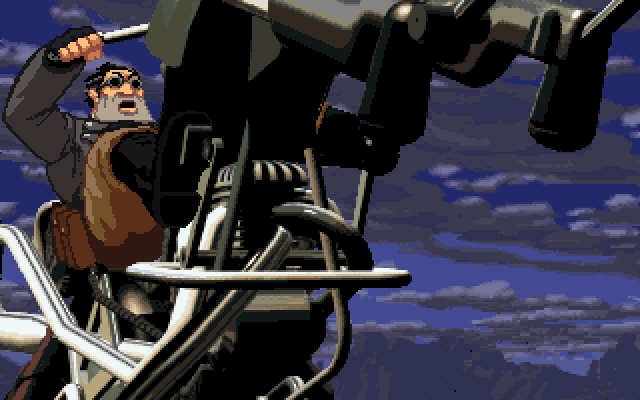
In those days, Lucasarts was actually pretty autonomous from the other companies. The Ranch generously donated a good portion of their custom library to us from the very beginning so we were able to work with all of those classic sounds. There were a few times when we went to the Ranch to grab specific sounds for Monkey Island and Episode 1 but that was the exception, not the rule. We also built our own sound effects library and recorded a vast amount of custom sounds. In fact, we were doing field recordings from the beginning. Clint Bajakian recorded all of Ben's motorcycle sounds for Full Throttle with a Sony Cassette recorder. I remember many fun field recordings…. grabbing crickets for Monkey Island ambiences at night up on Mt. Tam, banging on huge metal doors at the armory out at the Hedlands (for explosion elements), wrapping an AKG C1000 mic in an extra large condom and submerging it in the ocean out at Pt. Reyes for underwater ambiences for Monkey Island. Good times.
How did the SCUMM engine, used to power most of LucasArts’ adventures games, accommodate (or fail to accommodate) the responsibilities of a sound designer?
The glory days of SCUMM were a little before my time, but many of the features found their way into iMuse, which we used extensively.
Most LucasArts games employed the iMUSE sound system beginning with Monkey Island 2. In what ways did this engine affect the approach or scope of sound design?
iMuse was so ahead of its time it's ridiculous. There are still features of that system that don't exist today. We were able to mimic the game running within a stand-alone application… it acted like the game, played sounds like the game but wasn't the game. It was iMuse. By the way, they used the name iMac way before Steve Jobs did. Seriously. I still remember the little iMac icon, just begging you to double-click on it.
You joined LucasArts around 1995, when CD-ROM games had taken over floppies. What ramifications did this have for the sound design? How was the playing field changed in the transition from MIDI to live samples, and from text-based dialog to full voice acting?
The question pretty much answers it. We were able to ship thousands of voice files, hundreds of sound effects and have full-blown music recording sessions. We were able to kiss 11 kHz - 8bit files goodbye! Poof! The funny thing is, the lessons we learned in the process of making 11kHz-8bit sound good are still valuable today.
Did this transition prove to have limitations as well as offer new opportunities? For example, the use of iMUSE in MIDI-based games like Monkey Island 2 or Fate of Atlantis is incredibly dynamic and complex to a degree that isn’t really possible with live instruments, but on the other hand a movie-quality soundtrack like that of Outlaws is pretty amazing despite not being particularly interactive.
Well… the premise of the question is not altogether true. While you are right that Monkey 2 and Fate were extremely dynamic, the only reason we could not get the same results with digital audio was disk space. Mike Land and Peter McConnell (and Clint Bajakian) had designed such an amazing system with iMuse that they really did have the best of both worlds. The file format they came up with allowed the placement of data markers that allowed as many transitions as the composer desired. If there had been DVD games then, we would have had every bit as much diversity with digital audio.
On a side note about Outlaws, it was movie-quality because that was our goal. The level of thought that Clint put into that score was amazing and I will never forget those recording sessions. Similarly, the voice acting was superb, Darragh did a great job and the audio was nearly all custom-recorded. One of the high points of my Lucasarts career for sure.
In what ways did the sound designers collaborate with the composers? What sort of relationship did you have with folks like Michael Land, Peter McConnell and Clint Bajakian? (I should also say “continue to have,” as they’ve been the composers on several games BA Sound has worked on as well!)
These are all friends of mine and people who I have the utmost respect for. Working with Mike and Clint on Monkey 3 was amazing… never a dull moment. To answer the question, yes, we did collaborate. We all were in the same office, ate 95% of lunches together and worked long hours together. We could not have avoided collaboration if we tried… and good thing too because there was a lot to be learned from each other.
Similarly, what sort of collaboration was there with folks like Khris Brown, Darragh O'Farrell, and Nick Peck?
Khris actually helped train me when I started in the Voice Department. We went on to work on tons of things together and enjoyed a lot of laughter from the safety of the soundproof rooms. Darragh and I started at the same time and I still remember the BBQ at "A Building" where I found out he was sharing an office with Larry the O and Mike McMahon! If you knew these people and their respective jobs, that alone would make you laugh… A Sound Designer, an Audio Programmer and a Voice Director. Darragh and I worked very closely for many years, spending way too much time sealed up in our oxygen-starved studios "saving the game" (our term for going the extra mile on some little detail no one would actually notice). Darragh and I are good friends, he's one of the game industry's greatest. In those days we all fed off of each other, inventing new ways to do things then bragging to everyone about how cool the new thing we came up with was. Only to have it out-done by the next guy the following week.
I think if I had to pick the most impressive LucasArts game in terms of sound design, it would be The Curse of Monkey Island. The sound effects and the music seem to have a wonderful acknowledgement of each other’s existence, with background ambience such as the barking of a dog or the creaking of a windmill feeling like they're actually remarking on the music. Plus, there’s an interactive song in that game, the likes of which I’ve never really seen replicated. Is there a particular LucasArts game, Star Wars or original, that you were particularly fond of from the perspective of your contributions? Any wacky or memorable production story you’d care to share?

Funny you mention Monkey 3 since it was probably the best experience I had at Lucasarts (along with Outlaws). On Monkey 3, Clint and I did the sound and Mike Land did the music. The three of us worked together very closely and really went all out on our respective tasks. Clint and I even tried to sell a field recording trip to Belize to Mike (who was also the department manager), claiming that it was the only way we could get the realism we were after. We were obviously shot down…. and so began our first trip to grab sounds from the Skywalker Ranch library. Gary Rydstrom's awesome ambient recordings aside, we did a vast amount of custom field recording for that project, perhaps more than for any other game I worked on there. This experience solidified Clint and my relationship and let to our ultimate partnering once outside of Lucasarts.
What made the year 2000 the time to break away from LucasArts and set out on your own?
Quite simply, it was dot com time… I was made an offer I could not refuse. The guy literally said, "whatever you are making, we'll double it AND give you a signing bonus". Uhhh, ok? So I did a year of hard time working on streaming audio technologies with a company called iBeam Broadcasting. Let's just say that iBeam is all gone… and so is all the worthless stock. As that year dragged on I missed working in game audio terribly. I was still in regular touch with Clint who was freshly out of Lucasarts and had started his own company called CB Studios. After one calendar year passed (and 20% of my soon-to-be-worthless stock options were vested) I joined Clint and began working on Star Trek Bridge Commander with LEC flight sim veteran Larry Holland. I was back in the industry and loving every bit of it.
Bay Area Sound frequently collaborates with LucasArts, as well as companies founded by former LucasArts folks. Is it fair to say that there’s a family atmosphere amongst your regular clientele?
We were friends back then, we are friends now. Ex-Lucasarts folk have been through a lot together and we all know how each other performs when the chips are down. I am in awe of so many of those people's talents and am fortunate enough to still be working with them today.
In what ways is working for LucasArts as a third party different from working in-house, and what ways is it the same?
Well, I still feel like an employee, crazy as it sounds. Things are the same in that I know the players and we have a history to fall back on. Things are different in that I am free to put my head down on a particular project or task without the interruptions of working in a company. Trust me, no one is free from interruption, but I am able to get a great deal done in the solitude of my cave.
Could you explain for those who don’t know what studio.jory.org is and what the relationship is with BA Sound?
Studio.jory.org sounds like a URL, but it's a company name… and a URL…owned by Jory Prum, another ex-Lucasian. Jory was hired toward the end of my stay at Lucasarts but logistics threw us together. The Sound Department had outgrown the old records vault that our studios were in, so they built more rooms downstairs. They were short two studios so I remained upstairs and Jory moved in across the hall from me. I was technically supposed to "keep an eye on him" but I'll tell you something about Jory… I challenge you to find a more talented and computer literate person. Go on, try. He and I geeked out on a level that should be illegal… and maybe it was. We came up with some amazing systems together and really raised the bar on the technology side of things.
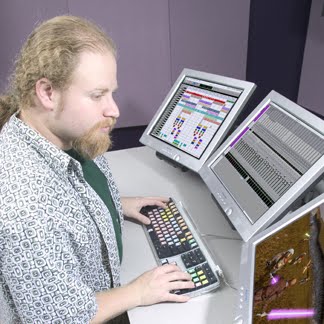
About half way through my last project at Lucasarts (Star Wars Force Commander), I got the dot com offer. Jory was the first person I told. I said, "I'm leaving, and you need to take on the lead role on FoComm". Fast-forward a few years and a few collaborations with him in the outside world and he is the owner of a recording studio. We got the call to do the sound and voice for Secret Level's America's Army game, complete with all kinds of technical challenges. We were back to geeing out once again and laid the groundwork for what would become the system we used to produce all the voice for the Telltale projects. Suffice it to say that the methods we employ today have deep roots.
Continue on to page two where we talk about work BA Sound's done for the LEC spinoffs, including hints at what Jared's got cooking for the soundtrack to Sam & Max: The Devil's Playhouse.